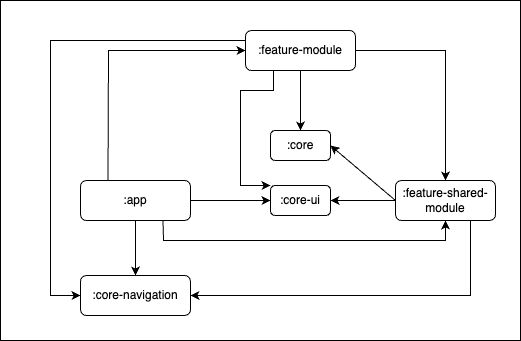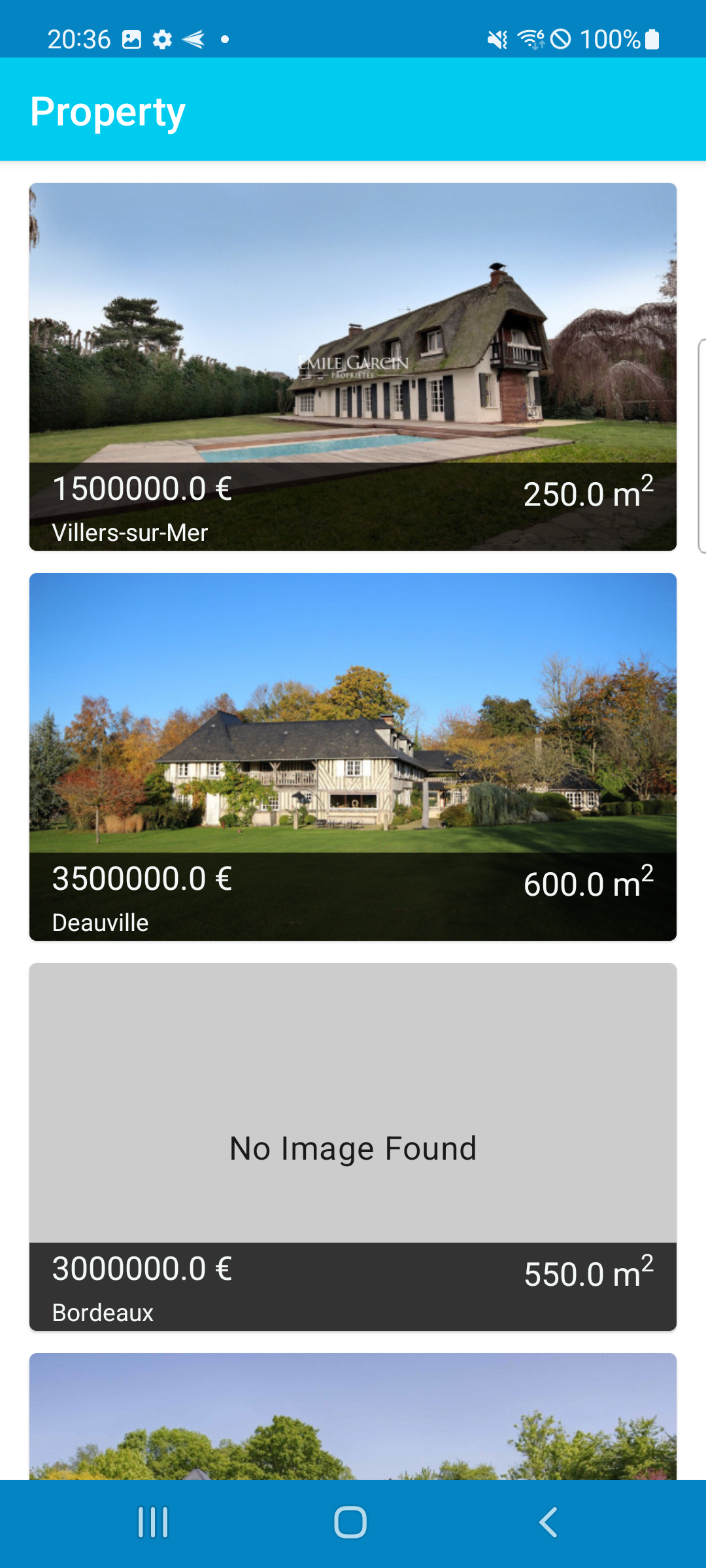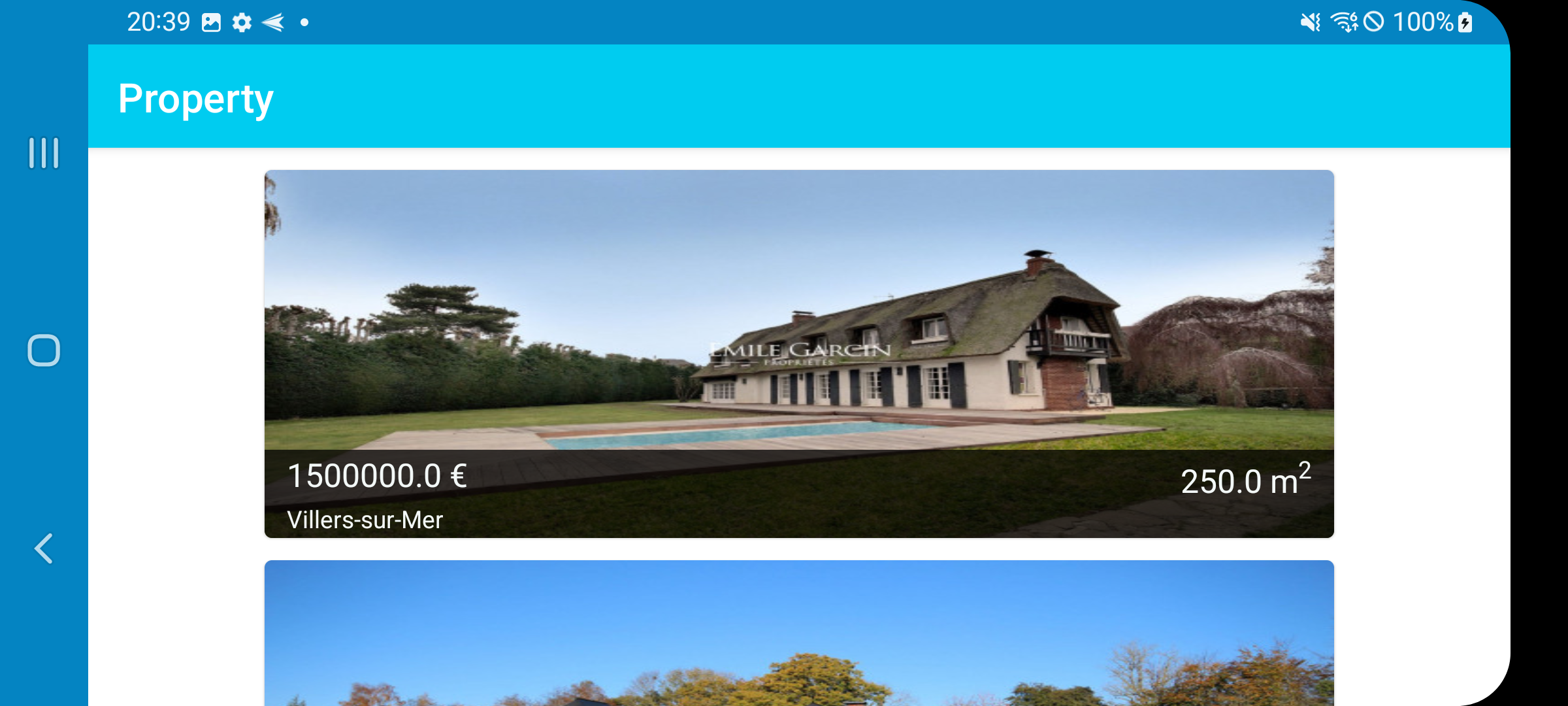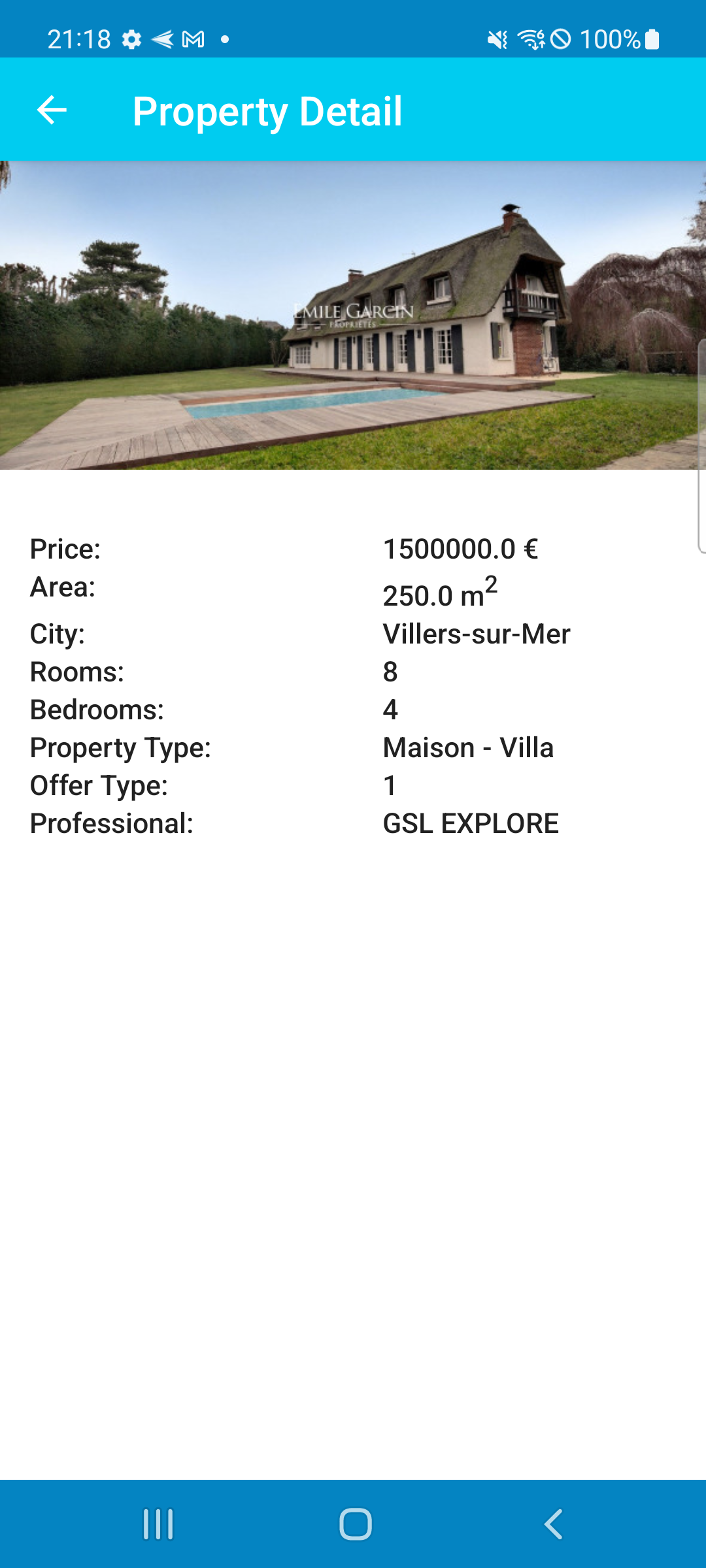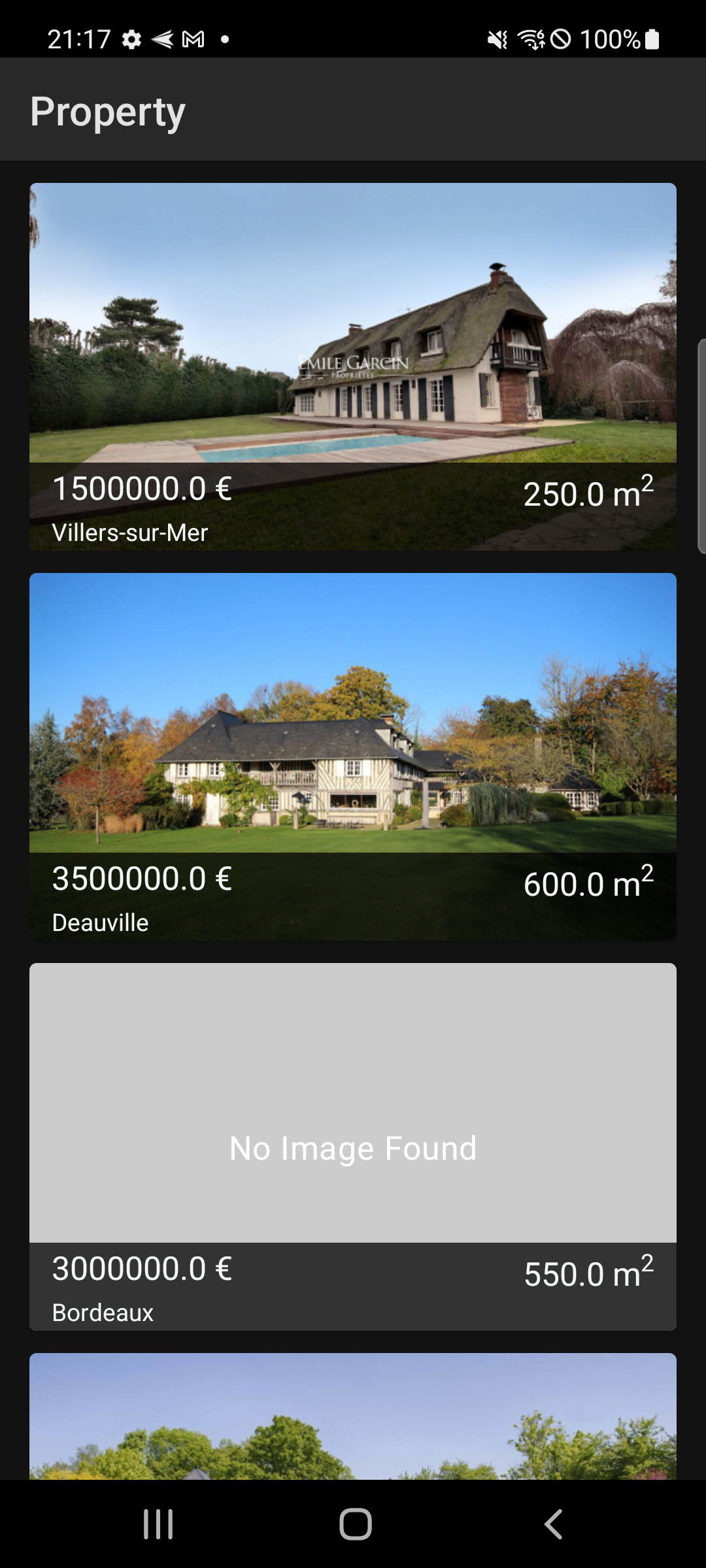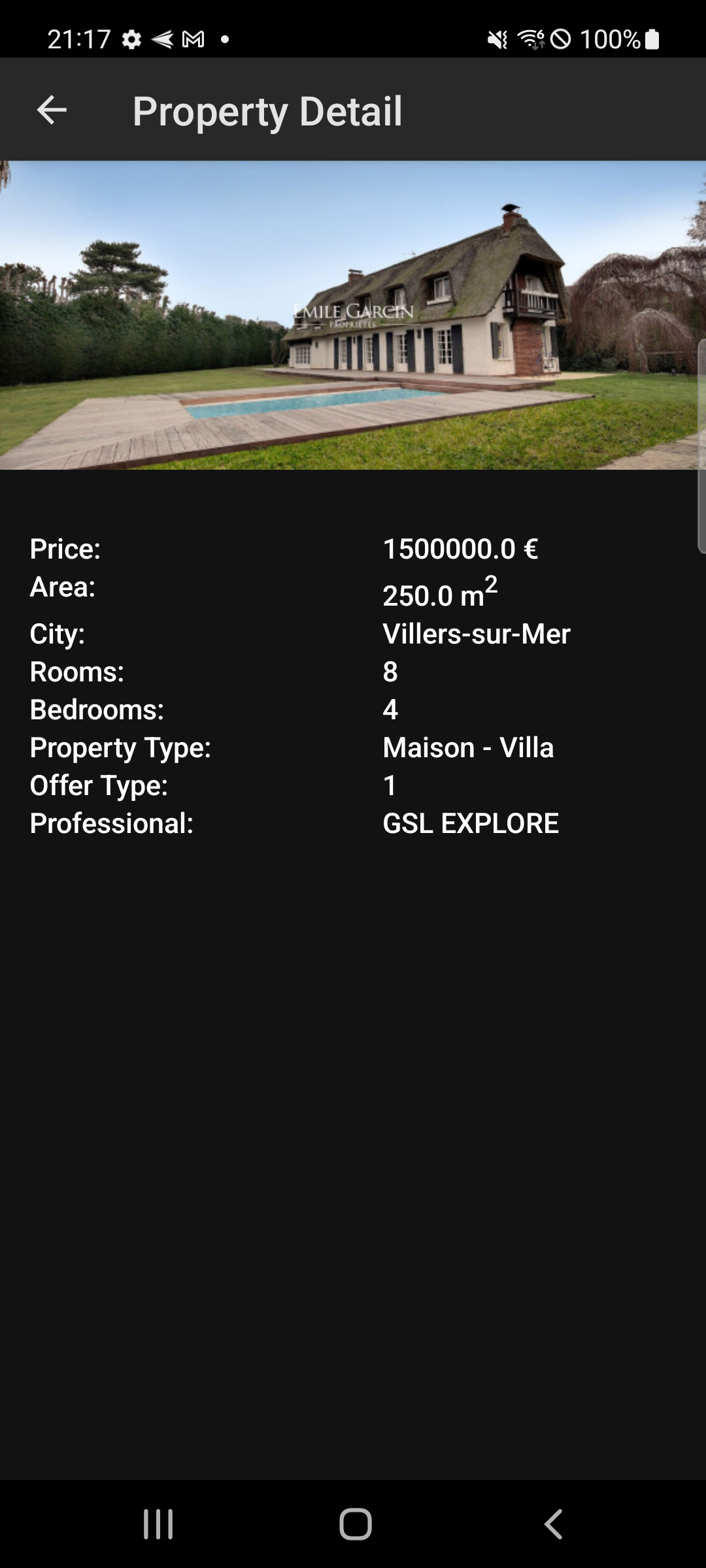In this code base, I implemented single activity, compose only, multi-module solution for fetching real estate property. I implemented the solution using multi-modular approach for better scalability. The above dependency graph is showing which module are depending on which module. Core modules are not depending on any other module. Any feature module can depend on feature-shared modules and core modules. The feature-shared module can depend on core modules. App module can depend on every other modules. The modularization is done depending on vertical slicing approach. For more information please check this article. This type of modularization makes the features loosely coupled, ensure high cohesion, no unintended behaviour sharing and it is build time friendly.
To implement the solution, I used MVI+MVVM architecture with clean architecture approach in each module. In MVI (Model, View, Intent) architecture, user interaction regards as event (or user intent) that change the model which represents UI state. ViewModel is responsible for creating immutable state for the ui and hold them. I use shared flow for user events, stateflow for states. User events are one time event that is why I use hot observable like shared flow. Stateflow is used for immutable view state which is collect as compose state in the screen. Stateflow can repeat last item whenever there is a new subscribe. That is why it is the best option for holding state and after the configuration changes(screen rotation, theme change, language change etc.) it can provide the last state. The error events are also part of the view state as they are view model events. Moreover, Stateflow is also used for navigation. The reason for using state flow for viewModel events e.g., error event or navigation event is to make them more reliable. For more information please check this link.
Inside every feature module, the packages representing clean code architecture layers (presentation, domain, data). The presentation layer is responsible for drawing UI, UI related logic and holding UI states. Composable screens, view model, UI data models and mappers are part of the presentation layer. Domain layer is responsible for business logic. Different business use cases and domain models are implemented in this layer. Data layer is responsible for providing data. Repository implementation, datasource (internal and external) should be part of data layer.
The following tools and technologies are used to implement the solution:
- kotlin
- Hilt
- Retrofit
- Kotlinx serialization
- Coroutines (flow)
- Jetpack Compose
- Room
- JUnit
- mockk
- turbine
- Espresso
- detekt
- ktlint
Note:
- The unit for price and area are not present in the API response. The implementation has been done by assuming the unit for price is euro and area is square meter.
